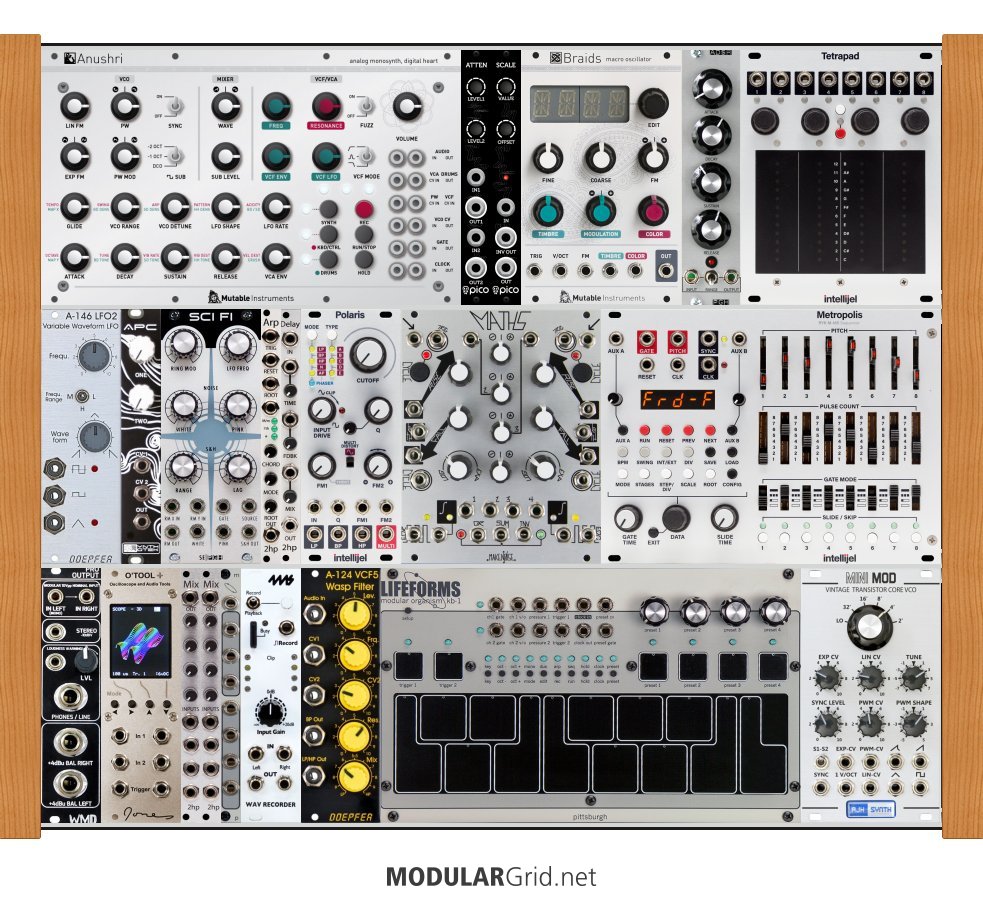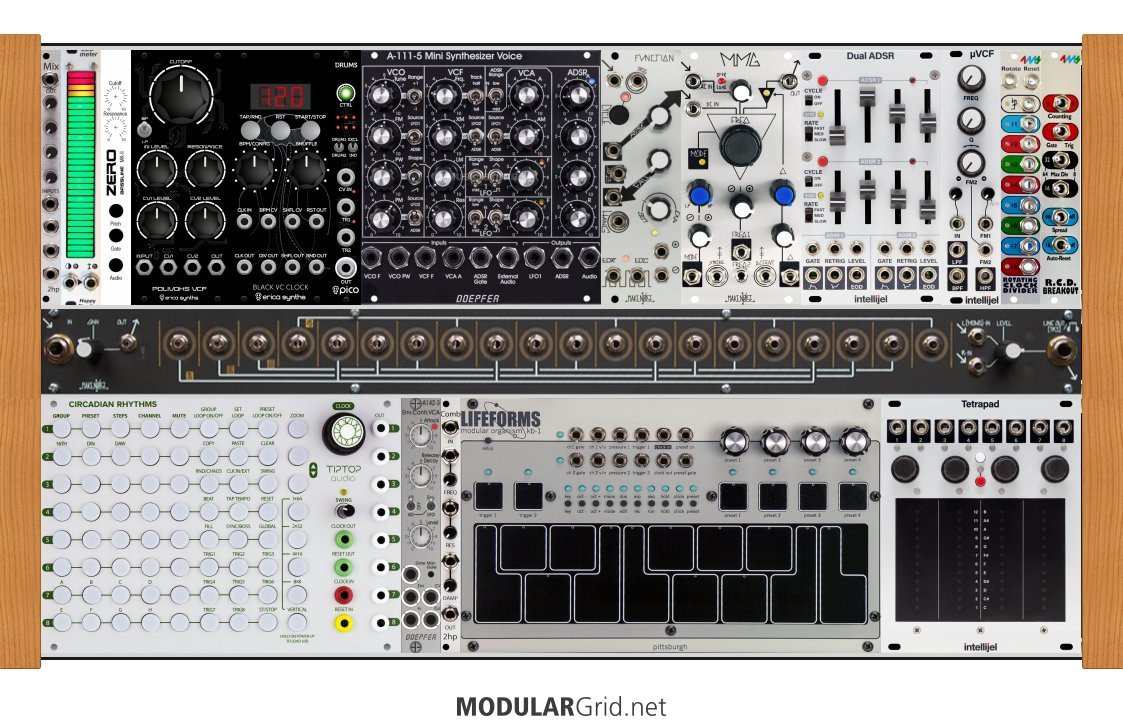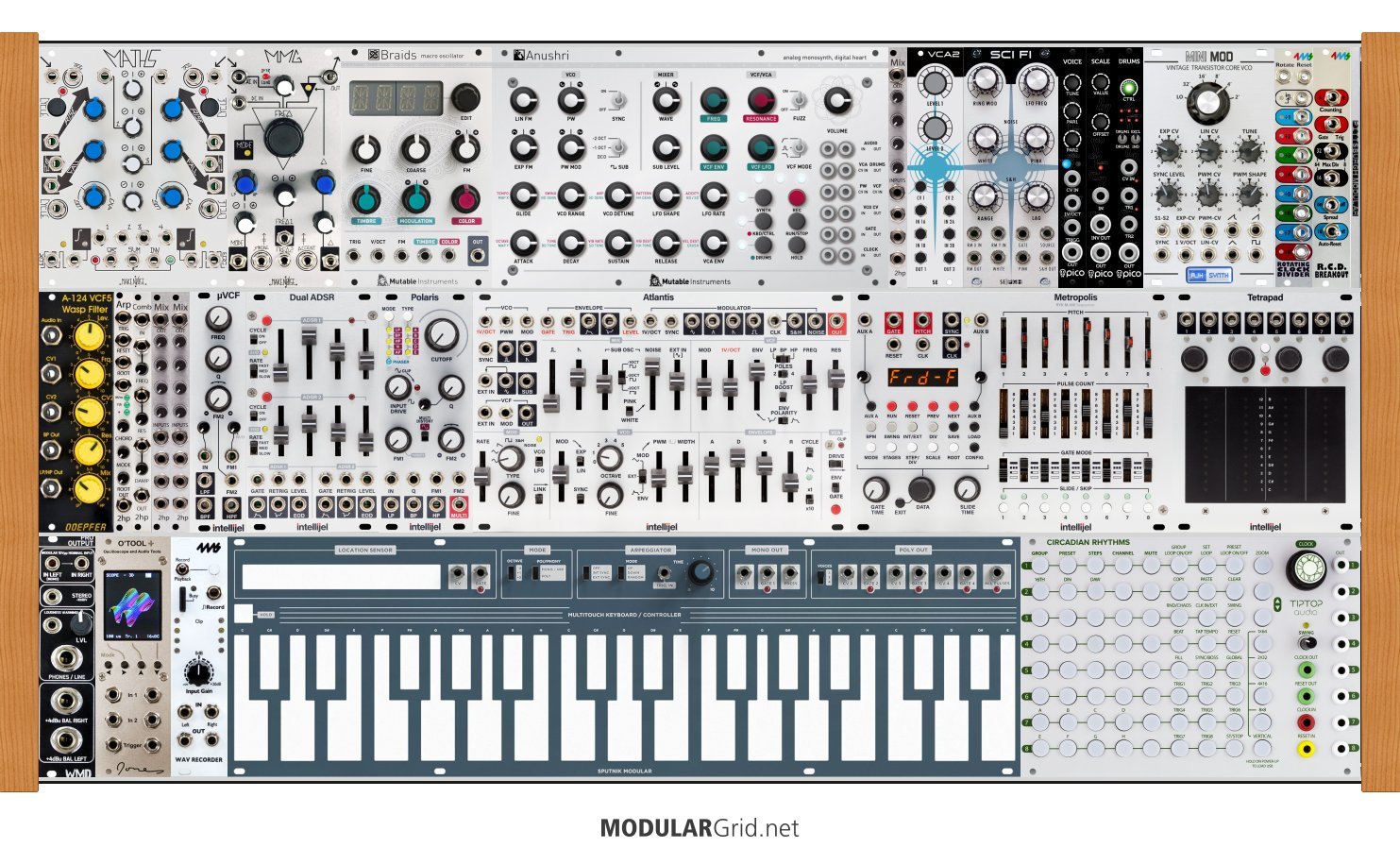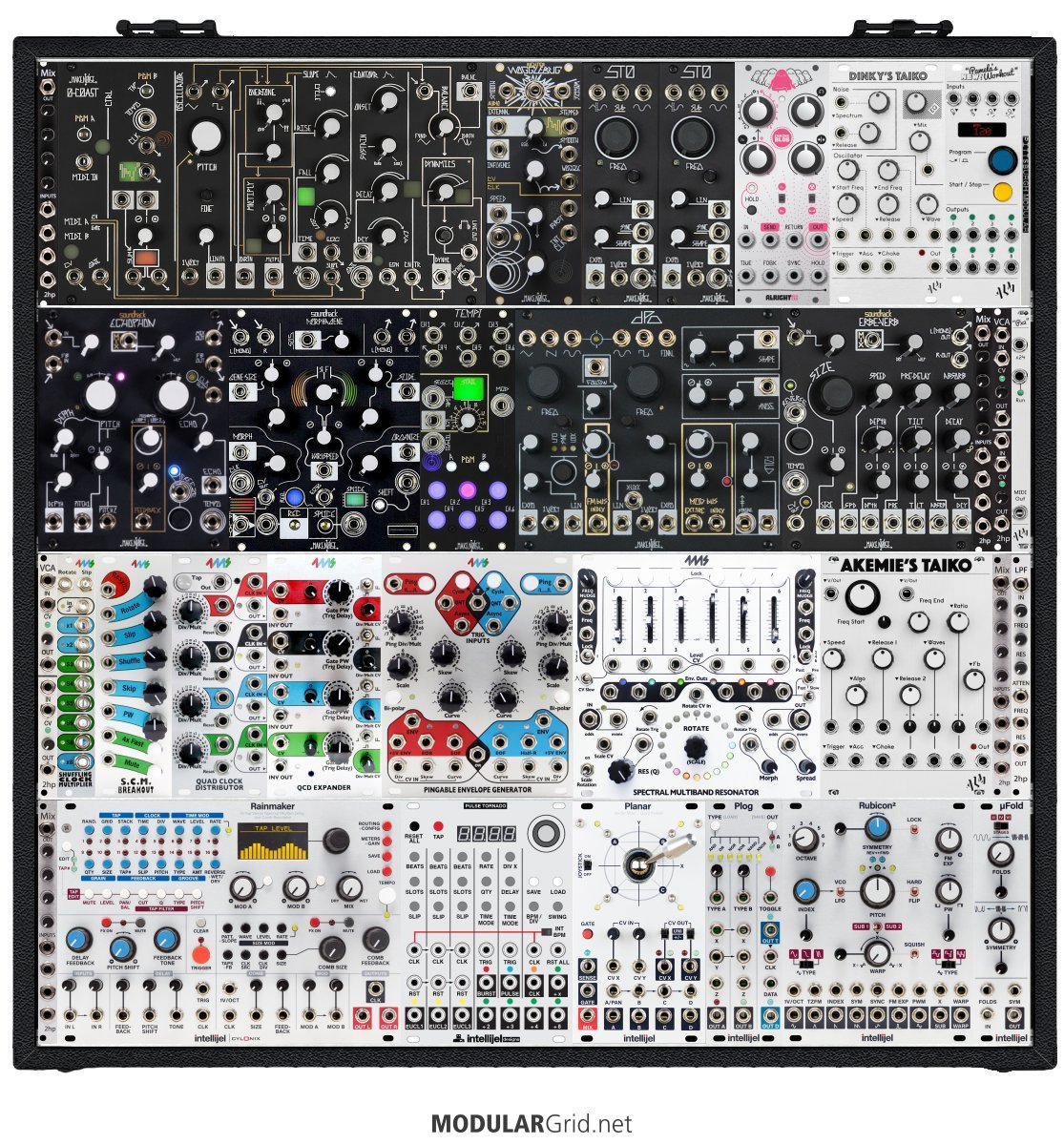Artists throughout history have inspired billions with their music. I am one of those billions, and my dream is to do the very same; but, how? The musicians that awe-struck my mind always had a certain tone and feeling in their music. These musicians used analog synthesizers. So, I sought out to use the same kind of instruments with a specific taste in mind: play something different, create something inspiring, make something incredible. At the same time, I am someone with an imaginative and creatively structured mind; so, what did I do? I spent time researching the instruments these musician used and pondered around modular synthesis. I was dumbfounded by the immense amount of opportunities that came along with this technique of making music. I then took to the "drawing board" --per say-- and started to create my own synthesizers.
The DREAVisual synthesizers were made in order to accomplish one mission: make incredible music. To accomplish this task, I envisioned a modular synth with features likewise to a conventional synthesizer. These features would include: a keyboard, a crisp and analog sound, and an ergonomic design. So, I sought out to design the first model of the DREAVisual Synthesizer, the DREAVisual-tMK1. The name of the model can be broken down fairly simply; "DREAVisual" stood for the Synthesizer's name, "t" stood for touch, and "MK1" stood for the mocked up generation. I chose to label this mock-up with "t" as I wanted the name to reflect it's true, tactile, and immersive feeling the user has when playing the synthesizer. The design was quirky at first, and did not fully meet the expectations I set; however, with long hours spent researching, I pulled together and finalized the "tMck1". There were 3 rows to the synth, all of which had 90 HP to hold carefully selected modules. The case that held these rows was the Pittsburgh Modular Structure EP-270, and when laid on its back and facing the user top rack to bottom, the design could be used in an uncommon fashion. This peculiar layout expressed a feeling likewise to an ordinary synth; the keyboard on the bottom and lower than the knobs, sliders, and I/O's that overshadowed the entire synth. These modules that over-swept the synthesizer included the names of Anushri, Tetrapad, Polaris, Maths, Metropolis, A-124 SE, Braids, and many others. Altogether, this electronic instrument could blow your ears with astonishingly beautiful sounds. The DREAVisual-tMck1 was complete; however, the mission I sought out for did not feel over just yet. This is when I expanded the DREAVisual line-up with the Mck2 signature models: the "tMck2d" and "tMck2lp". These synths were a perfect and expansive combination of the Mck1 and split the synth into 2 separate instruments. The DREAVisual-tMck2d --"d" is for desktop-- pulled the twisting and turning of the modules into one rack, better known as a module-man's playground; whereas, the DREAVisual-tMck2lp --"lp" is for lap-- took the handheld and tactile feeling from the keyboard and formed it into one rack. Together, these 2 racks made a perfect combination for even more crisp and organic musical opportunities. They both entailed an Anushri, Tetrapad, Polaris, Maths, Metropolis, A-124 SE, and Braids -- likewise to the previous mock-up; however, there were many more modules to expand upon: the MMG, Circadian Rhythms, Rotating Clock Divider (R.C.D), R.C.D Breakout, A-111-5 Mini Synth Voice, ZERO Baseline MkII, Function, Atlantis, A-146, and many more. These modules inside of a Pittsburgh Modular Structure EP-270 in a traditional set-up and a Vermona Modular Case 104 were two tickets to modular heaven (for the everyday consumer); yet, I still felt that my job was not finished. I needed to make one final addition to the DREAVisual line-up: the DREAVisual-tMk3m and DREAVisual-tMk3s. These module racks were created to be the final destination for any synth enthusiast. The DREAVisual-tMk3m --"m" is for, yes you heard me right, mega-- held a plethora of modules: a Modified 0-Coast, Ricther Wogglebug, Chronoblob, ALM005 - Dinky's Taiko, Pamela's NEW Workout, Pexp-2, Echophon, Morphagene, Tempi, DPO, Erbe-Verb, Shuffling Clock Multiplier (SCM), SCM Breakout V2, Quad Clock Dustributor (QCD), QCD Expander, Pingable Envelope Generator, Spectral Multiband Resonant Filter, Akeie's Taiko, Rainmaker, Pulse Tornado, Planar, Plog, Rubicon II, uFold II, 2 STOs, and many, many others. Not to mention, all whopping 34 modules were held inside a 4 row, 104 HP, MDLR Performer Series Pro Case. This rack was ready to hit the road; however, the design could not be complete without the 3 row, 140 HP, Pittsburgh Modular Structure EP-420 with the case being used on it's back and setup reversed from top to bottom. The modules inside this monstrosity were an Anushri, Tetrapad, Polaris, Maths, Metropolis, A-124 SE, and Braids --similarly with both previous mock-ups; yet, there were still so many modules to cover. There was also a Sputnik Touch Keyboard: a 29 key keyboard 15 keys larger than the original KB-1. There were also modules like the Atlantis, Circadian Rythms, RCD, RCD Breakout, and others; all of which were seen previously on the "Mck2" models. Altogether, these expansive lists of modules made up the towering, musical masterpiece all derived from a simple goal: make incredible music. Finally, that goal has been accomplished.
Now, I can proudly say that I have the "tools" to create music just like the musicians that inspired the billions of people that included myself and maybe you too. Now that I have taken and accomplished my call to action, it's your turn. Please, consider taking a look at any of the 5 models from Mock 1 to the Mock 3's and maybe you will be just as inspired to make something out of the ordinary.
Thank you :)
THE LINE-UP






